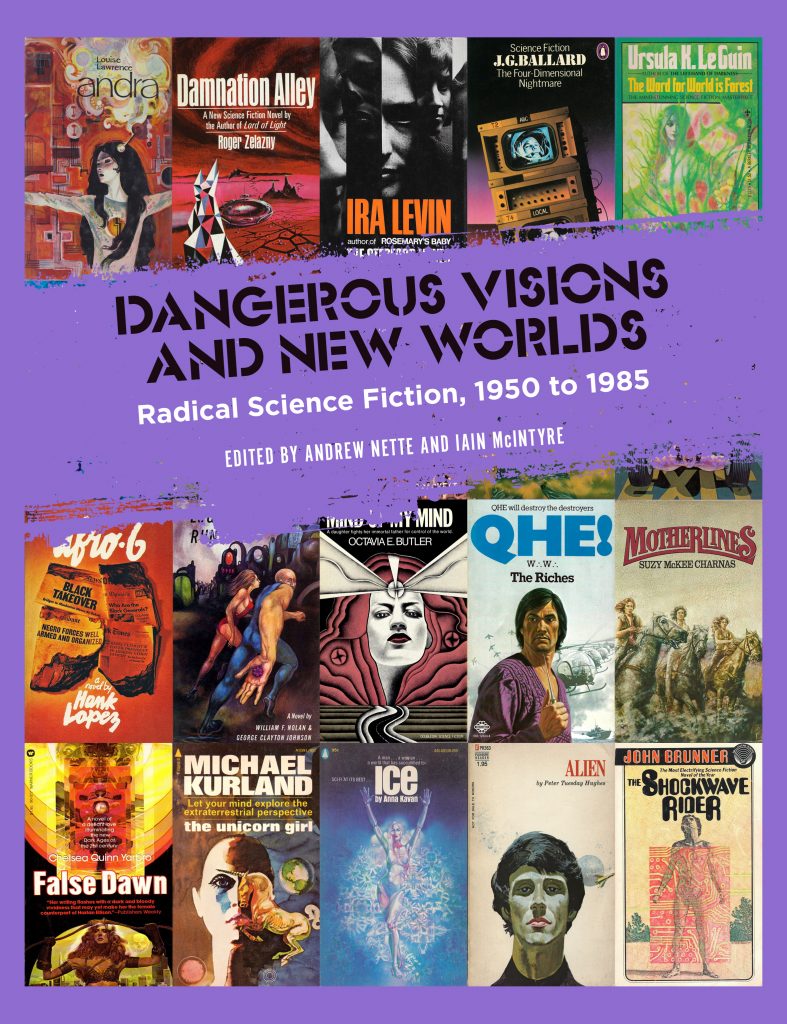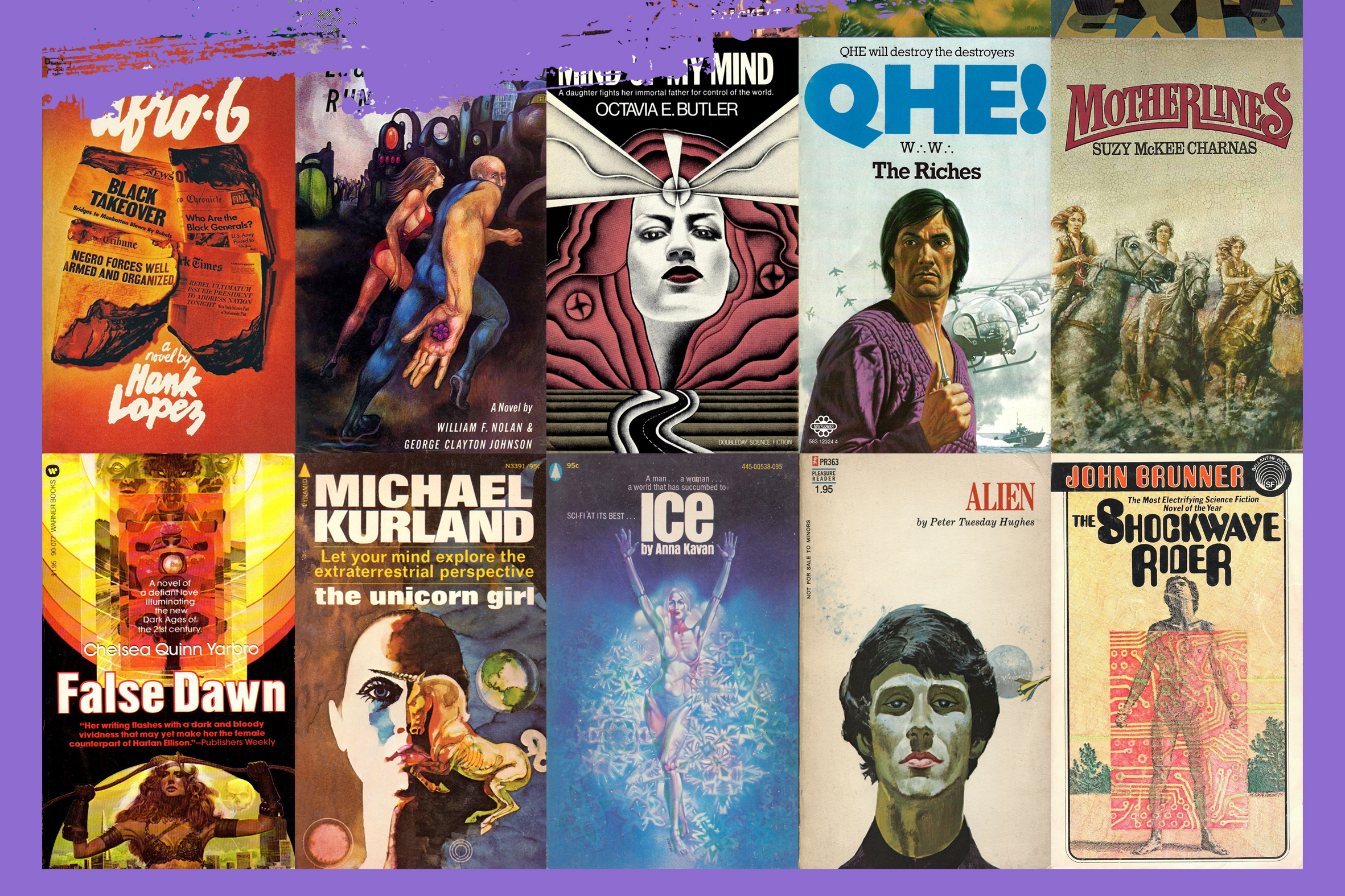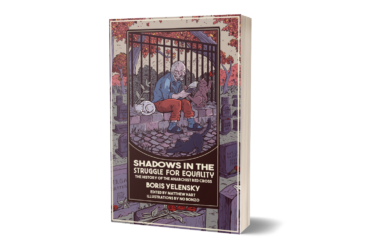By The Weightless State
March 11th, 2022
I discovered the existence of Dangerous Visions and New Worlds when a friend of mine forwarded me an email for the related “all star radical science fiction symposium” of the same name. I have loved the multitude of ways that countless science fiction authors have used their craft to raise awareness, create understanding, envision newer better (or worse) worlds, or to just shake up the status quo. I am less familiar with older science fiction of the era highlighted in this book than I would like to be, so this seemed like a great place to find ways to include more of it.
Part of my reasoning for being less familiar is that I often associated older popular scifi with random (white straight) dudes fighting mythical monsters and rescuing damsels in distress which to me was too much like a lot of older (and current) fantasy as well. This is referred to by authors in the book as the “golden age/old guard” of science fiction. While there were definitely authors creating works outside of those tropes, they were not as common, popular, or given much attention due to heavy censorship from conservative pulp magazines among other things. Following this was the “new wave” which is the focus of this book. The new wave was full of talented authors seeking to honor or motivate people to participate in or support leftist political movements along with the entertainment that comes from enjoying their stories. I was hoping to discover some new names and titles from this book and it definitely delivered (which you can likely see in my goodreads feed full of recent to-read list editions.)
It is a strange task to review literary criticism and analysis when the texts are discussing books and stories that I have not read. I was born in ’82 and grew up with SF reading parents- especially my dad- and books throughout the house, but didn’t get into SF heavily myself much until college. I would say I have read about 5% of the stuff included in this book, if that. Some entries managed discussion without spoilers while others had to include the whole story in order for their analysis to make the most sense. I found it interesting that another reviewer disliked some of the entries that I liked most- though I see his point that focusing on obscure texts with little influence on wider society may not have been what some readers were looking for. This fits into the whole hit or miss world of anthologies where one person’s hit is another’s miss. That can be a weakness or strength, but I think it works for this book.
One of the lovely things about this book that really sets it apart from many academic and adjacent anthologies is its inclusion of vintage book covers of the books and stories discussed. It was a great choice to add this visual element and draw the reader into the time period. Some entries are more academic in style than others, so fantastical illustrations breaking that up was nice. It also reminded me of when I was a child artist and one of the jobs I wanted was to draw book covers or comic book cards because, at the time, that and museum art were the only jobs I thought the fine arts provided.
My favorite entries in the book were (without subtitles for brevity:) Flying Saucers and Black Power, ‘We Change and the Whole World Changes,’ Speculative Fuckbooks, Eco-Death, Stepford Wives and Supercomputers, The Stars my Destination, A New Wave in the East, Performative Gender and SF, The Moons of Leguin and Heinlein, and Black Star. There’s a tie for first place between Performative Gender and SF: The Strange but True Case of Alice Sheldon and James Tiptree Jr and The Moons of Leguin and Heinlein which have both kept me thinking since I put the book down days ago. I actually did my high school senior reading project on Heinlein’s Stranger in a Strange Land because it was the only SF book on the school’s list that I hadn’t heard of an my mom told me it had weird sexuality in it. My only other exposure to him was the Starship Troopers movie that I saw as a parody of militaristic authoritarianism. I actually didn’t know how conservative he was until a class in college.
There were a couple things I was disappointed with. One is that Harlan Ellison is spoken about with great praise and no criticism by many authors. I admit, there were a few sections I skipped over either due to lack of interest or because there was a novel I didn’t want spoiled, but for the majority that I read, this was the case. Ellison’s legacy includes great creativity and strides in SF, but also misconduct and abuse. The other thing that bothered me was a section on animals. I was excited by the premise then disappointed by the length and content. I’m left wondering why it was even included. The worst part is that the author discusses animals as “space explorers” creating the same narrative of those who abused them that makes them seem like willing participants. There are a lot of heinous things about animal exploitation that haunt me, but one of the ones that does the most is the idea of someone being sent into infinite terrifying blackness through massive horrifying explosions, left alone to die surrounded by nothing but space. We should never discuss these abuses of dogs, rats, chimps, guinea pigs, and even fishes in ways that make them seem like a Disney fairytales or heroic space faring legends- especially not in a book about the liberatory nature of science fiction.
This book (and the rad online symposium) did a good job of combining interests in artistic entertainment, analysis, and social justice. I was introduced to some great history and now I have a whole new intimidating reading list that I will never complete in my lifetime. But, it’s still fun to try.
This was also posted to my goodreads.
Posted by Corvus Strigiform at 7:31 PM







